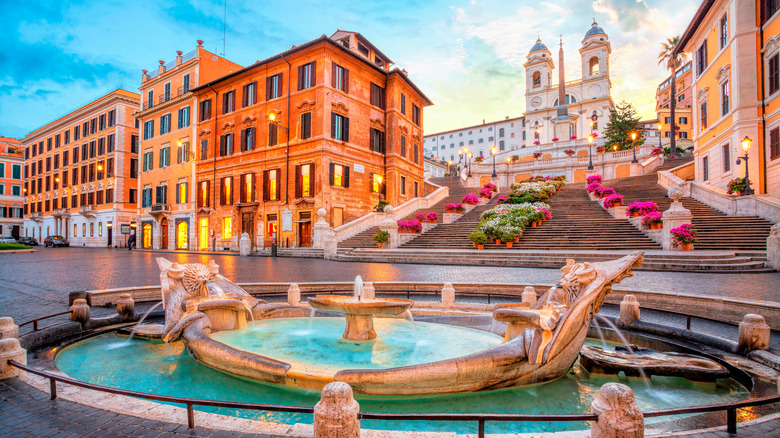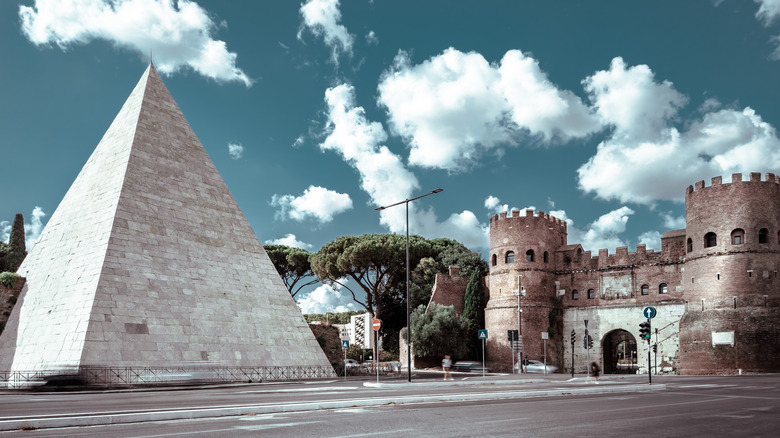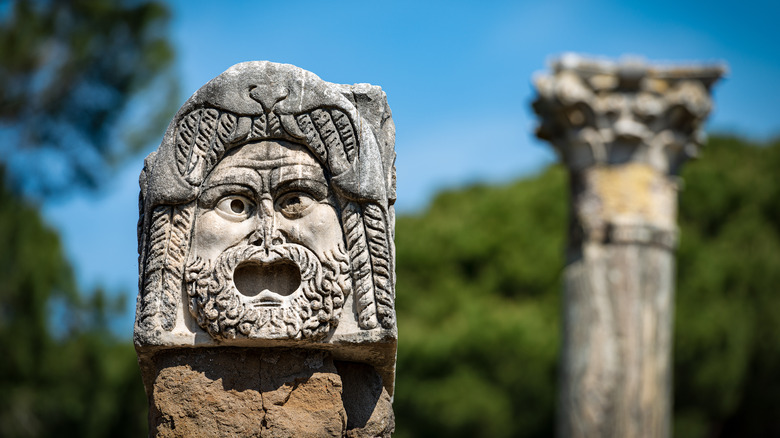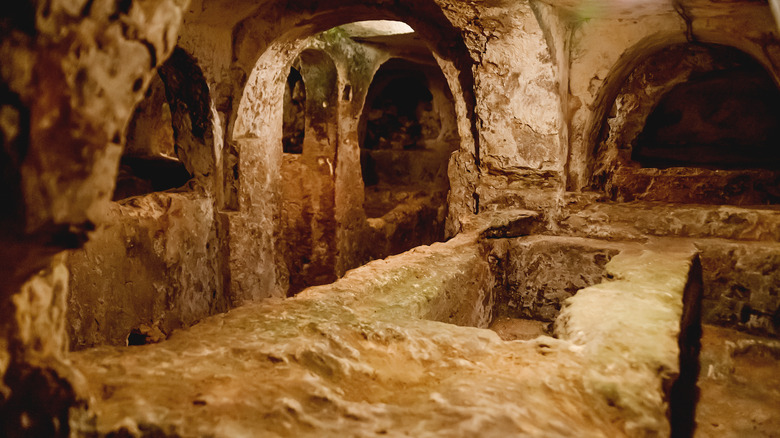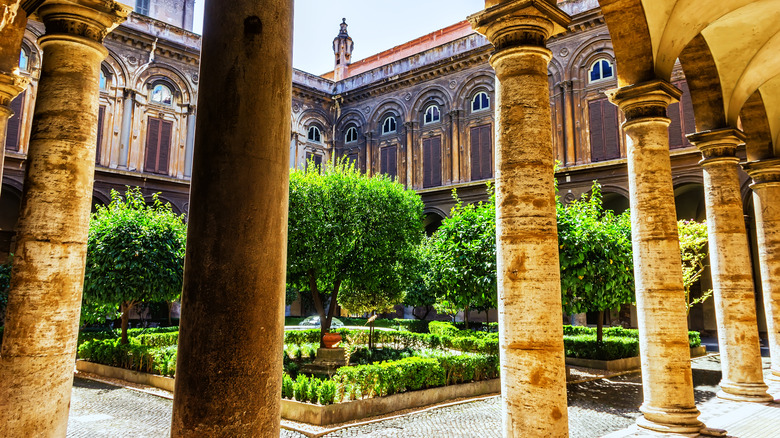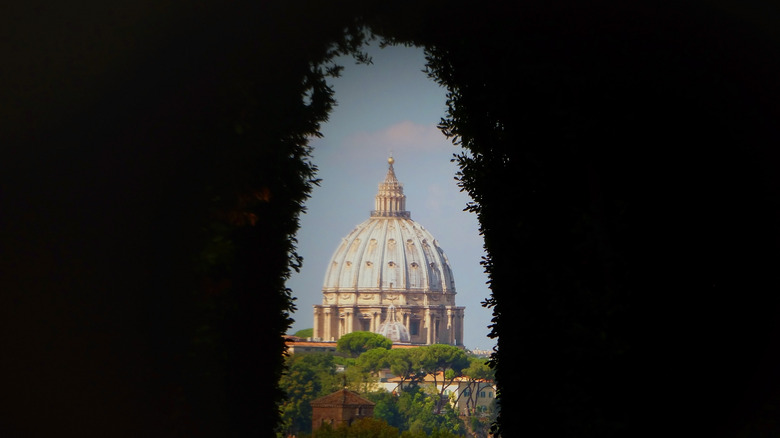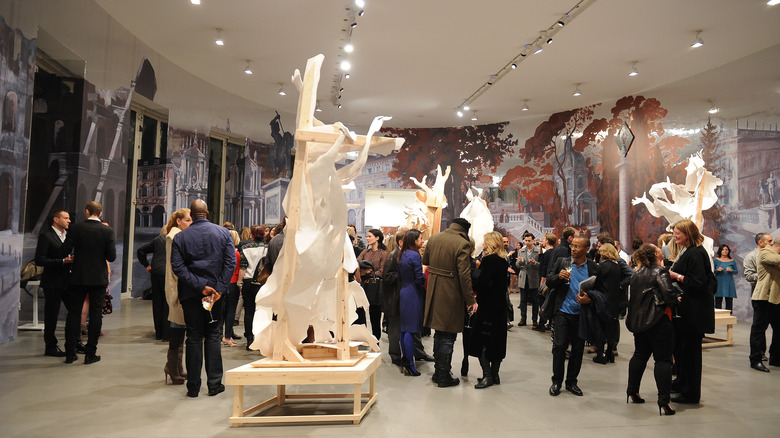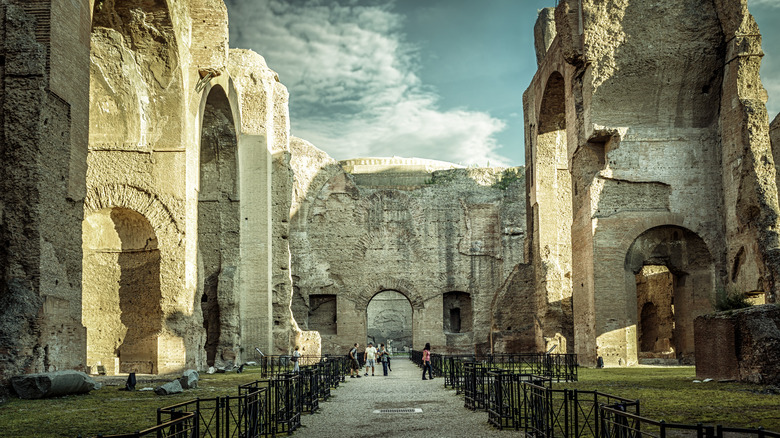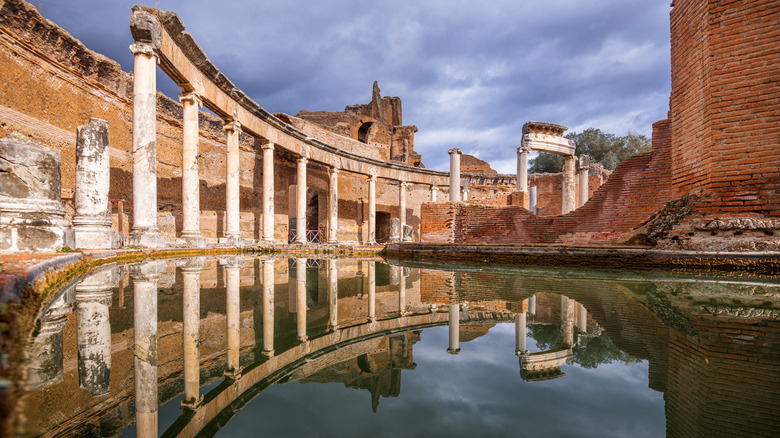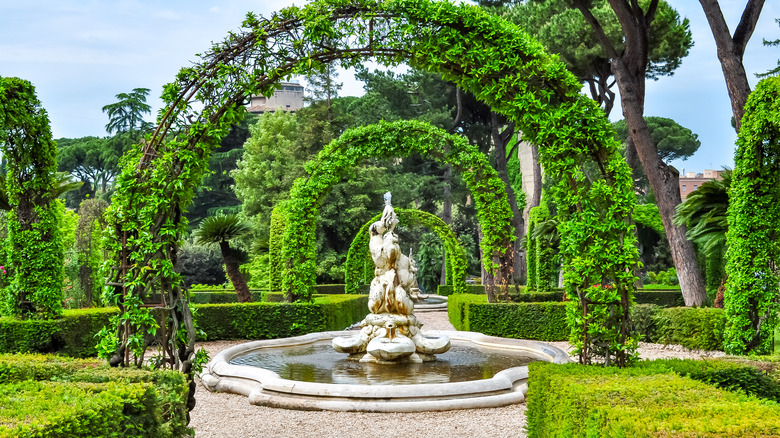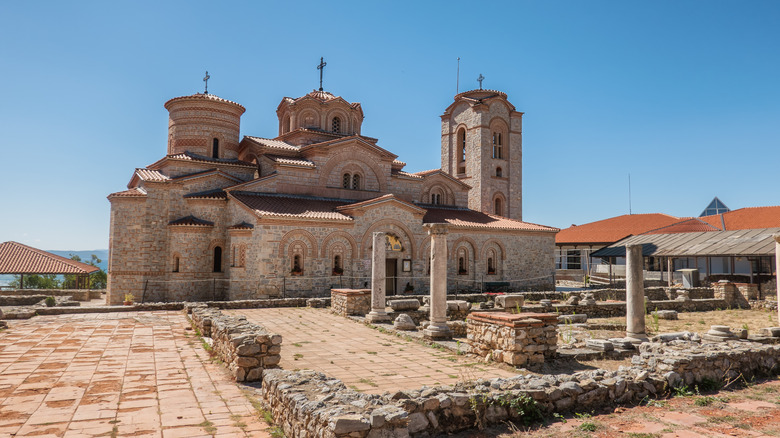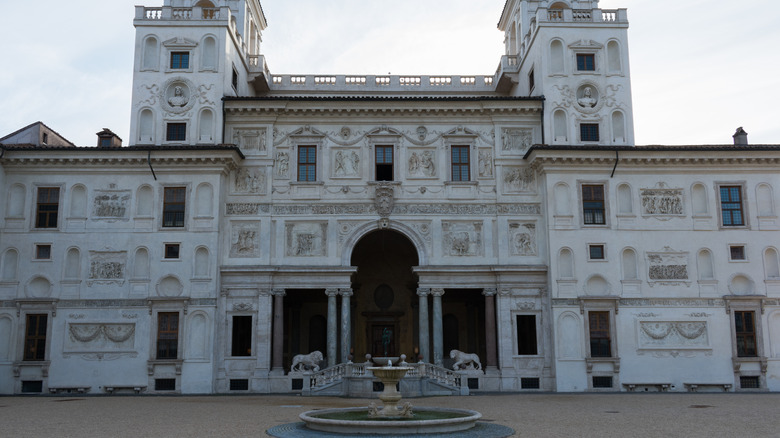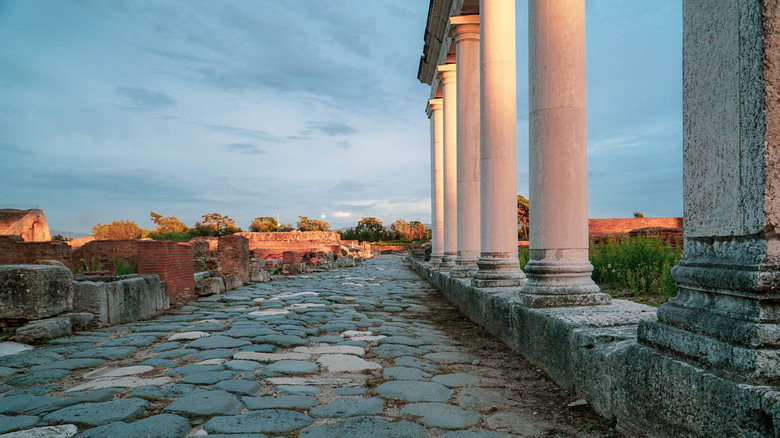Underrated Attractions In Rome You'll Want To Add To Your Bucket List
There is no denying the fact that Rome is a gorgeous European city that is brimming with history, ample attractions, amazing cuisine, full-bodied wines, temperate weather all year round, and so much more. Whether it is your first time visiting the Eternal City or your fifth, there are countless ways to immerse yourself in the robust culture of the Capital of the World. A visit to this enchanting destination is definitely a must for any traveler.
First-time visitors can easily cross all the popular points of interest off their Rome bucket list, as most well-known sights can be seen in a few days. But what happens after the Colosseum, the Pantheon, the Trevi Fountain, the Vatican, and the Sistine Chapel? Of course, not all attractions are created equal in the Eternal City. Still, that does not mean some lesser-known spots are not worth checking out — when in Rome (pun intended). Even with limited time on your hands, there are some off-the-beaten-path highlights you really should not miss. That said, here are thirteen bucket list-worthy underrated attractions that await travelers in Rome.
Pyramid of Caius Cestius
The Pyramid of Caius Cestius is a fascinating Roman structure that visitors often overlook. Located in the Ostiense District and built in 12 BC, this structure was a tomb for Gaius Cestius (a wealthy magistrate). Since this towering Roman pyramid has several centuries' worth of history, tourists are typically not permitted inside the structure. Though on occasion, they can take a peek inside, and visitors can still schedule outside tours, which are full of compelling facts and mythology.
Besides being a tomb, Caius Cestius was also a landmark for travelers along the Via Ostiensis and the River Tiber. Today, many visitors wonder why there is an Egyptian pyramid in Rome, but this architectural wonder is a true Roman monument through and through. Interestingly enough, pyramid construction did not start until after the Romans conquered Egypt and adopted some of their styles, resulting in two Roman pyramids. This particular pyramid was able to withstand invasion, the destruction of an empire, wars, and the ever-changing landscape in Rome. So visitors should definitely check this one out. And while you're in the neighborhood, the Protestant Cemetery and Porta San Paolo are just around the corner from Caius Cestius — both of which are underrated gems that should also earn a place on your bucket list to the Eternal City.
Ancient ruins of Ostia Antica
These stunning ruins are just a short subway ride away from the City Center and happen to be a great alternative if you cannot make it out to Pompeii. A less-crowded set of ruins, Ostia Antica was abandoned after the Roman empire fell. As centuries passed, any materials left behind of value were plundered for construction elsewhere. Still, this archaeological site is only partially excavated, so there is a whole ancient world that awaits visitors.
Founded in the fourth century BC, Ostia Antica has buildings, villas, roads, and various other structures that were built between the first and fourth centuries AD. There is also an onsite museum filled with local artifacts, and more. So whether you are looking for a non-touristy attraction or do not have the time to drive three hours to Pompeii, the Ancient ruins of Ostia Antica are another off-the-beaten-path must. And with a host of incredible Roman wonders to marvel at, a little trip to Ostia Antica is a great way to spend an afternoon in the Capital of the World— so you can just go ahead and add this one to your bucket list as well.
Catacombs of Saint Callixtus
Many people may be surprised to learn that there are catacombs in other destinations in the world other than Paris. But, Rome is home to several underground networks, with the catacombs of Saint Callixutus being the largest in the city. These catacombs date back to the third century AD., and roughly 500,000 people are buried here, including countless martyrs and 16 popes. Stretching beyond 90 acres in total, with 12-mile-long galleries, and multiple levels, the catacombs of Saint Callixtus are definitely extensive.
In the first century, many empires, including the Romans, did not have traditional cemeteries like today. Both Christians and pagans had their own unique methods for burying people. However, catacombs and burying the dead underground was not normal practice until large plots of land were donated to the church, and various grants allowed for this change in customs in the first century. So the catacombs of Saint Callixtus are definitely worth a gander for their history alone. Plus, with guided tours and lots to see, this is another underrated point of interest in Rome that should be on the itinerary for anyone who loves history with a dash of dark tourism.
Palazzo Doria Pamphilj
Built in the mid-1600s, this breathtaking palace in Rome is a beautiful mansion and museum. With a lavish interior fit for royalty, Palazzo Doria Pamphilj is definitely a sight to behold. But, for many visitors, this home's private art collection is the real draw. This is not just any art collection either — the artwork that adorns these walls makes up the largest private collection in all of Rome, which was originally started in 1644.
With several spaces inside the mansion showcasing works of art from the last 379 years, you cannot help but feel like you stepped back into time here in this grand palace. Gifted by Pope Clement XII to the Doria family in the 18th century, this family continues to maintain this lovely estate and its collection of phenomenal works to this very day. Palazzo Doria Pamphilj is a great addition to your itinerary because, despite being widely known, many tourists have yet to discover this hidden gem, which makes for a pleasant afternoon of appreciating historical art sans the masses.
Aventine Hills and Knights of Malta Keyhole
In many ways, the Aventine Hills and Knights of Malta Keyhole is the smallest attraction in Rome. Due to its sheer size alone, it is not too surprising that some visitors miss the opportunity to peek through history. Located at the Church of Santa Maria del Priorato, once owned by the Knights of Malta (a military order), a door with a special keyhole and a private garden awaits.
It is here that curious travelers can peer through a medieval-looking lock that highlights a lush outdoor space. But that's not all — the keyhole lines up almost perfectly with a well-manicured shrub and gives viewers a clear vantage point of the dome of St Peter's Basilica. However, this is where most tourists' fun starts and ends as the private garden is, well, private. Nevertheless, the Aventine Hills and Knights of Malta Keyhole have a rather intriguing backstory that is definitely worth hearing about on a tour, maybe? No matter how you learn more about this space and its almost "Alice In Wonderland" -like appeal, the keyhole and private garden are true hidden gems, so travelers also should add them to their list.
Rome Cavalieri Art Collection
In addition to seeing the largest private art collection in Rome, visitors should also carve out some time in their busy itineraries for the greatest — Rome Cavalieri Art Collection. Located inside the Waldorf Astoria Hotel, the Cavalieri Art Collection has it all — contemporary pieces, artwork from the 16th century, 18th-century paintings by Giovanni Battista Tiepolo, breathtaking sculptures, and more. Here, visitors and hotel guests can peruse a diverse selection of dazzling art while enjoying the overall luxurious atmosphere of a 5-star hotel empire.
Travelers who do check out this legendary private art collection should make it a point to check out the rest of this lavish hotel, too. Not only is the Rome Cavalieri a Waldorf Astoria Hotel, but it is also nestled in one of the city's most high-end neighborhoods, Monte Mario. Situated on a hilltop and surrounded by a private 15-acre lush park, visitors can marvel at some of the most spectacular works of art, see the Vatican from a different perspective, and get a bird's-eye view of countless other Roman landmarks.
Baths of Caracalla
Bathhouses and Romans tend to go hand in hand. So, of course, a bucket list-worthy item on your when-in-Rome agenda definitely includes a bathhouse or two. It is highly recommended that visitors opt to stop by the Baths of Caracalla, as these ancient Roman baths are the second largest in all of Rome and date back to the third century AD. As far as attractions go, the Baths of Caracalla are impressive and have quite a history. This grand Roman bath house is even mentioned in biblical writings, so it is worth a visit.
Built by Emperor Caracalla, this bathhouse was considered a grandiose undertaking even back then. But with a newly constructed aqueduct, hundreds of enslaved people, sophisticated technology, and architectural planning, it only took approximately five years to build. When in use, this larger-than-life bath house could accommodate over 1600 bathers with ease. The Baths of Caracalla also featured several exercise rooms, two libraries, a massive garden, and a recreational swimming pool. This bathhouse was left remarkably intact, even after the fall of the Roman Empire, and is another underrated must-see in Rome.
Day trip to Tivoli
Tivoli is a lovely little town located just outside of Rome and is worth a day trip if you have the time. This historic attraction has two Unesco World Heritage sites — Hadrian's Villa and Villa d'Este — both awe-inspiring. Hadrian's Villa was sometime constructed before the fifth century and is nestled in the Roman countryside. For Emperor Hadrian, this villa was a place of refuge from the hustle and bustle of the city and a great place to remote rule. Though not much remains of this grand villa now, its ruins tell a story of Roman luxury and architectural elegance.
Villa d'Este, on the other hand, is a well-maintained private abode with breathtakingly beautiful gardens and equally great historical significance. The resting place for Cardinal Ippolito d'Este, whom the property was named after, Villa d'Este was his passion project in 1560 and actually had more than a few ancient pieces of décor from Hadrian's Villa. Still, the gardens and the Cardinal's home lay in ruin for generations, and it was not until after WWI that an extensive restoration plan was put in place. Today's Villa d'Este is nothing short of spectacular and is one of the two reasons visitors should take a trip out to Tivoli (a tour of Hadrian's Villa, of course, being the other).
The Vatican Gardens
Visitors with plans to check out the major attractions will likely stop by the Vatican. So, whether you opt to appreciate this attention-grabbing group of buildings from afar or decide to take a tour of Saint Peter's Basilicas and the Vatican Museums — one thing is for sure — visitors should not leave without exploring the Vatican Gardens. This park and lush outdoor space are hardly ever crowded and, as a whole, are truly picturesque.
Touted as one of the most beautiful and well-manicured gardens in The Eternal City, the Vatican Gardens can easily be explored on foot. Here, visitors can enjoy a leisurely and relaxing stroll with an abundance of trees, including olive and papyrus trees, and a footpath that showcases three different cultural influences — French, English, and Italian. The French garden path displays classic baroque art statues, while the English walkway has traditional garden elements such as shrubs, ruins, and pagodas. Finally, the Italian-style garden highlights the Italian Renaissance's overall design and plant features. So, do yourself a favor, pop around back, and marvel at all the rich green spaces — you definitely won't regret it.
The architecture at Saint Clement Basilica
After visiting Vatican City and stopping to smell the roses in the Vatican Gardens, travelers who appreciate old-world church architecture are in for a real treat at Saint Clement Basilica. This multi-tiered church dedicated to Pope Clement I is surprisingly not one of the bigger tourist attractions, which is a bit perplexing. This particular basilica is actually quite amazing because its layers provide a historical record of Rome from the onset of Christianity to the start of the Middle Ages. But, of course, the upside is that this underrated point of interest is never crowded so that visitors can take in all the beauty and overall architectural prowess without the tourist masses.
As suggested, Saint Clement Basilica was built in layers (a total of three). The first or top layer was a place of worship from the Middle Ages around 1100 and is still regarded as a place of religious importance today. The second or middle layer is a fourth-century home atop a once-first-century chapel. And the third layer is a former nobleman's less-than-modest residence constructed on the foundation of yet another villa and warehouse that was ultimately destroyed by the Great Fire of AD 64. Visitors should also check out several fascinating aspects of this church, including The Mosaic of the Apse and The Schola Cantorum.
Villa Medici
Yet another underrated must-see villa in the Capital of the World is the Villa Medici. This stunning Italian mansion was built in 1540 and has been the official seat of the French Academy of Rome since 1803. Here visitors can take a trip to the past, as this villa is full of influences from Napoleon — who purchased the home to create an inspiring place for artists (both French and Italian).
This timeless mansion originally belonged to Cardinal Ferdinando I de' Medici, and his impact can be seen in this home's stunning Renaissance-style gardens and grounds. Of course, if that last name sounds familiar — then book a tour and learn all about this villa's ties to the powerful Medici family that once ruled Florence. With more than a few tour options available at Villa Medici, visitors can explore all of these aspects of this renowned haven for artists or deep dive into the enchanting world of the Medicis.
Regardless of the type of tour you choose, Villa Medici is full of history and interesting facts, so don't hesitate to add this to your bucket list. If you love all things Renaissance, plus enjoy history and fine art, then Villa Medici is for you. And don't forget to tour the expansive Borghese gardens when visiting— that is, if you can tear yourself away from all the history held within this villa's walls.
Appian Way
Finally, if all roads lead to Rome, then Appian Way is where it all started. Though Appian Way is not necessarily an underrated attraction, it is still a point of interest many people easily write off as just something to see and then move on quickly. Some travelers have even gone so far as to describe it as less than thrilling when it shouldn't be since Appian Way is Rome's first major roadway. It was originally built in 312 BC with massive stones or basoli — making it the oldest possible road in existence, so that is definitely something.
In addition to being the first road in Rome or maybe ever, Appian Way was the setting for Spartacus and thousands of his followers — as this is where they were crucified. And this is just one of many fascinating facts about this ancient super highway. Stretching over hundreds of miles, Appian Way originally connected Rome to Capua or modern-day Santa Maria Capua Vetere. Moreover, this feat of Roman ingenuity is littered with history, landmarks, and underrated facts, so it should absolutely be on your bucket list. Visitors should also take the time to really explore this attraction on foot, bike, or via some form of motorized tour group and learn even more about one of the oldest roads in the Capital of the World.
